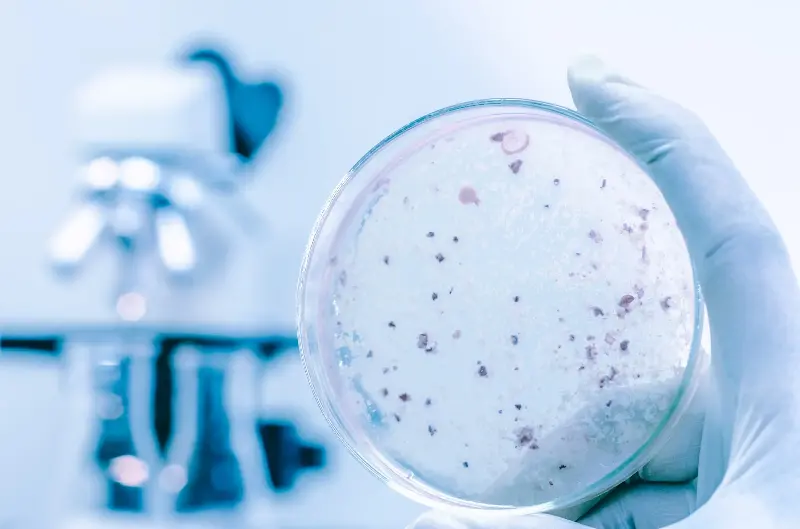
Next-generation technology has helped solve a 30-year mystery of how Legionnaires’ disease—a severe form of pneumonia—works, scientists say.
From an initial desire to understand why a specific protein was crucial for the bacteria Legionella to cause the disease, researchers have now been able to catch the bacteria “in the act” with 3D precision.
This could one day lead to new therapeutic drugs to tackle the lung infection, which is typically breathed in as tiny water droplets.
Using the advanced imaging technique called cryo-EM, Yale scientists have revealed the tiny biological nano-machine used by Legionella to infect our host cells.
Legionnaires’ disease is usually caught in hotels, hospitals or offices from things like air conditioning systems, humidifiers, spa pools, hot tubs and old taps and showers.
While rare overall, rates of the serious form of pneumonia have been increasing in the U.S. since the early 2000s, according to the Centers for Disease Control and Prevention (CDC).
Legionnaires’ disease affects around 10,000 people in the U.S. each year, according to the researchers. An outbreak during the summer in central Harlem, New York, claimed the lives of at least seven people.
“I’ve been looking for the answer for 33 years,” said Craig Roy, professor of microbial pathogenesis and of immunobiology, in a statement published on the Yale University website.
“Back in 1992 we only knew about just one protein—called DotA—that coded for this machinery. It took time and the emergence of new tools, alongside new expertise, to figure out how something in the bacteria’s membrane was communicating with our host cells.”
The researchers realized DotA wasn’t acting alone and was just one component of a complex “machine.” But less than a decade ago, before the arrival of cryo-EM (Yale received the first cryo-electron microscope in 2017) and related technological advancements, pictures of this machine weren’t clear enough.
Zooming out, the researchers moved away from a focus on just DotA and set out to identify more than 76,000 particles to better understand the nanomachine’s full structure and functions.
After a lot of trial and error, they at last identified 20 different Dot Proteins behind this.
“We needed the power of the cryo-EM to be able to manipulate the bacterial cells so we could finally reveal the action,” said study author and postdoctoral associate Samira Heydari.
This enabled the team to illuminate their data in high-definition 3D film, revealing the nanomachine shifting its “gear assembly” from closed to an open channel used by Legionella to deliver bacterial “effector” proteins into host cells to take over various cell functions, according to the team.
“To now be able to visualize the single protein I began working on some 30 years ago as one of the critical elements of the channel—it’s a dream come true,” added Roy.
An even deeper dive of the nanomachine will now hopefully be possible, with the mechanical channel known to carry more than 300 diverse proteins and prompting more research questions among the team.
With Legionnaires’ disease typically treated with antibiotics, the scientists say the findings could have a broader impact. One of their aims is to learn how to manipulate the bacteria’s ability to transfer antibiotic-resistant genes.
Antimicrobial resistance (AMR) occurs when bacteria, viruses, fungi and parasites no longer respond to antimicrobial medicines including antibiotics, creating drug resistance. This has been described by the World Health Organization as “one of the top global public health and development threats.”
Newsweek has reached out to the researchers for comment.
Do you have a tip on a health story that Newsweek should be covering? Do you have a question about Legionnaires’ disease? Let us know via [email protected].v
References
Yue, J., Heydari, S., Park, D., Chetrit, D., Tachiyama, S., Guo, W., Botting, J. M., Wu, S., Roy, C. R., & Liu, J. (2025). In situ structures of the Legionella Dot/Icm T4SS identify the DotA–IcmX complex as the gatekeeper for effector translocation. Proceedings of the National Academy of Sciences, 122(39), e2516300122. https://doi.org/10.1073/pnas.2516300122
